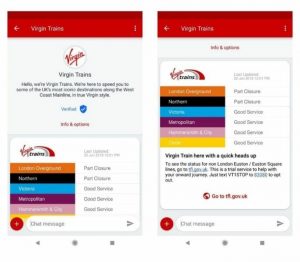Around 250 billion emails are sent each day. In order to stand out from the crowd, your email marketing campaign really needs to grab the attention of your audience. There are several methods to do this – a while ago I wrote about some of the best techniques to get people to read your email.
These techniques tend to work for email campaigns in general, but every audience is different! To ensure you are getting your email spot on, it can really help to look at your analytics. These are some of the ways you can use analytics to improve your email marketing campaigns:
Analyse Open Rates
Poor subject lines, boring sender names and a lack of a second line can all contribute to bad open rates. Average open rates vary between industries and businesses, but if you are regularly getting open rates below 15%, something needs to change. Because of the variety of things that could be affecting your open rate, it’s sometimes difficult to tell which particular aspect is the real issue.
First of all, take a look at your subject line and see if there’s anything that could make it more attractive. Effective subject lines often contain similar attributes to effective blog titles – the use of numbers, hot topics and keywords tends to work well.
The sender name can have a massive impact on open rates. Some of the highest open rates come when the sender name has been personalised. By this, I mean if you are sending your email to a list of clients or people you know, it can work well to use the name of their account manager as the sender name. This won’t work for everyone though – a lot of the time it can be more effective to simply use your company name.
Finally, the second line is an essential factor in optimising your open rates. Unless you’re an email marketing pro, you may not know what a second line is – the first line in your actual email content. Using this as a second subject line to attract people to open your email really does work well. It is the bit of text which shows up either below or next to the subject line, depending on which email server you use. Often people have ‘view in your browser’, or something similar, as their second line, as a result of them simply being unaware of what it is. An additional way you can create attractive second lines is by including the reader’s name – simply add a piece of code to your HTML. Here’s an example for Mailchimp, but just not that this code can vary depending on what platform you’re using.
A good way of discovering what works best – for all of the aspects mentioned above – can be using split tests. Play around with it all and see what works best; it may take a while to figure out but it will be worth it in the end.
Look At Click Through Rates
There are many ways you can use click through rates to analyse the performance of your campaigns. Ensuring you have a good click through rate often comes from having attractive call to actions and high quality email copy. Write your copy towards your target audience, in a tone that suits your business, and create bold, snappy call to actions.
A fantastic method for improving your click through rate starts off with remembering to tag your links. Link tagging consists of simply adding a name to your link, so that when analysing your links you see a memorable name rather than a URL – this makes it much easier for you to analyse individual links and find which ones perform best. If you regularly use a certain link and discover that it’s not performing particularly well, maybe you should look into what you can do to change it, such as using more engaging and eye-catching words or images.
Watch Delivery Rates
Delivery rates generally indicate the quality of your mailing list. Delivery rates below 90% tend to indicate poor quality contacts and you need to have a look into cleansing your list. If you’re achieving over 90%, there’s no need to worry – but there’s always room for improvement!
Don’t send too many emails to your mailing list. This can cause your readers to get bored or irritated with your content and resultantly block your sender address, or even worse, report it as spam. I would recommend sending a weekly email to your mailing list, but play about with it and see what works best for you.
People change their email addresses and fill up their inboxes more often than you would think – often resulting in your email bouncing. Regularly cleansing your mailing list will help consistently keep your delivery rates high.
A key thing to remember is that there’s not much point in doing all of this if you are only going to do it once. Constantly monitor the performance of your email campaigns and optimise them on a regular basis!
To discover some of the top email marketing tools, check out my 99 top tools for digital marketing strategy & ROI. It features some fantastic tools for improving your email marketing campaigns and digital marketing campaigns in general!
How do you use analytics to improve your email campaigns?
I’d love to hear your comments and tips!
How To Improve Your Email Campaigns Using Analytics
The post How To Improve Your Email Campaigns Using Analytics appeared first on Search Engine People Blog.
Search Engine People Blog(91)









